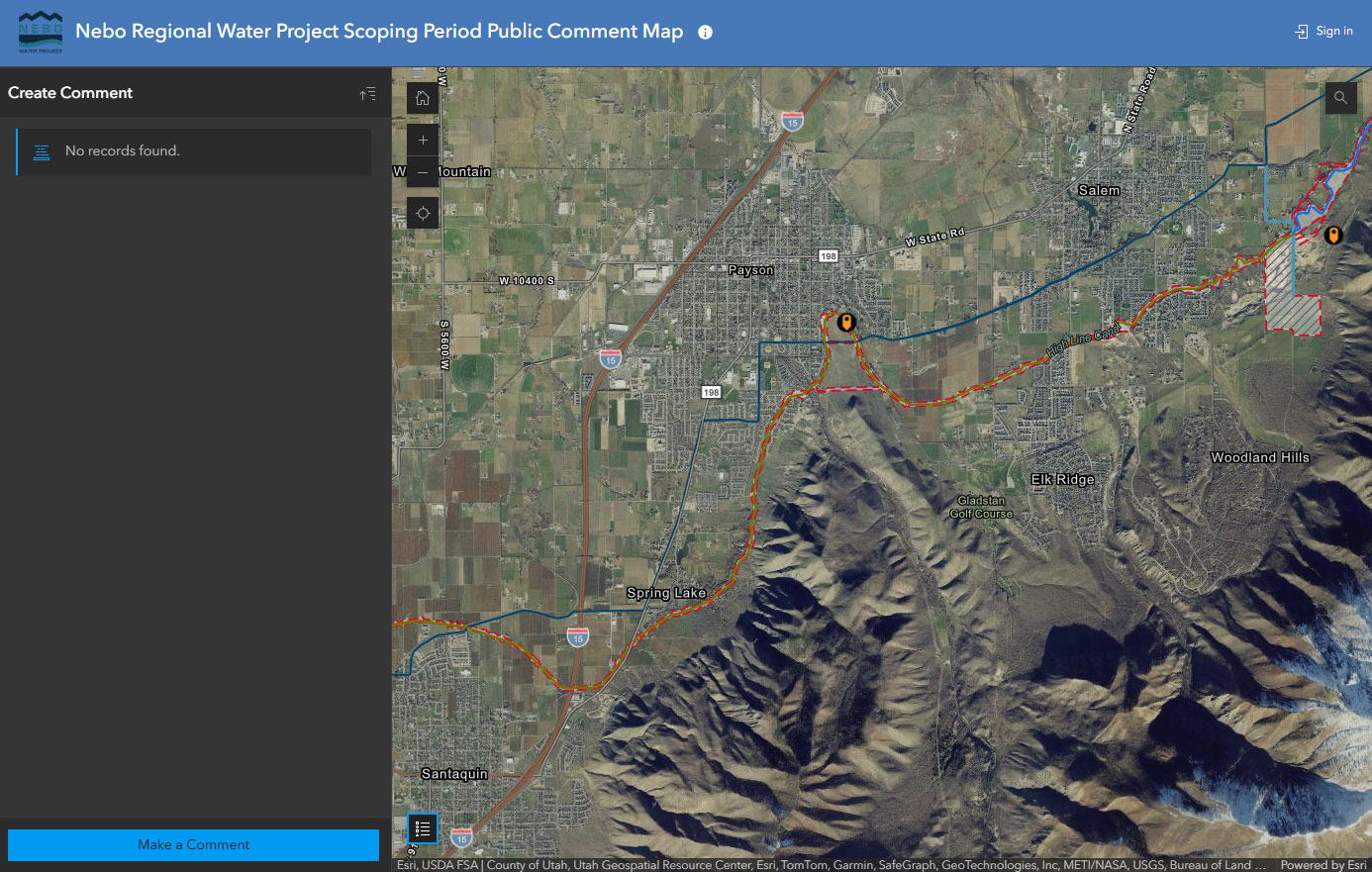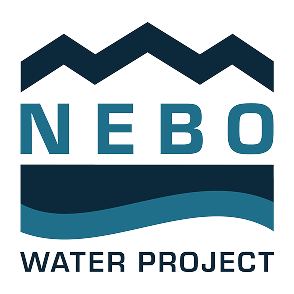Resources
We are committed to transparency throughout the planning and implementation of the Nebo Regional Water Project. On this page, you'll find key documents, informative resources, and answers to frequently asked questions.
Frequently Asked Questions
An EA is a document required by the National Environmental Policy Act (NEPA) that evaluates whether a proposed federal project or action would significantly impact the environment. It is used to determine whether a more detailed environmental impact statement (EIS) is needed or whether the project can proceed with a Finding of No Significant Impact (FONSI).
A federal action includes any project that requires permitting or a decision by a federal agency. This includes federal construction projects, adoption of federal programs, plans to manage federal lands, federal agency funding, and approval of grants, licenses, leases and permits. Changes to federally owned infrastructure and federal water proposed with the Nebo Regional Water Project would be considered federal decisions that would be made by the U.S. Department of the Interior, the U.S. Bureau of Reclamation, and the Utah Reclamation, Mitigation, and Conservation Commission.
- Central Utah Water Conservancy District - joint lead agency
- U.S. Bureau of Reclamation- joint lead agency
- U.S. Department of the Interior - Central Utah Project Completion Act Office- joint lead agency
- Utah Reclamation, Mitigation, and Conservation Commission- joint lead agency
- Strawberry Water Users Association - project partner
- Strawberry High Line Canal Company - project partner
An EA studies the impacts of a proposed change to the environment. This includes, but is not limited to, impacts to natural resources (such as wildlife, wetlands, floodplains, water quality, etc.) and other resources (such as farmland, archaeological resources, residential or commercial developments, infrastructure, recreational facilities, etc.).
An EA describes impacts and lists mitigation efforts that will be required for the project to be implemented. For example, if a potential project would impact a recreation area, measures will be identified to reduce the impact or enhance recreation facilities nearby.
The EA process includes the following steps:
- Scoping: This phase, when applicable, defines the anticipated range of issues and states what the goal of a project would be (purpose), the reasons why a project is needed (needs), and anticipated improvements with the project to help determine the scope of the EA. The length of the scoping period is typically 30 days. The comment period ends June 27, 2025. Read the Scoping Notice.
- Draft EA: Following the scoping phase, the EA team conducts studies to assess the environmental impacts of the proposed project. The study results are compiled into a Draft EA. This document is made available for public review and comment; the length of the comment period is typically 30 days.
- Final EA: After the Draft EA public comment period is closed, the EA team reviews all public comments, responds to them, makes updates to the EA if needed, and uses them to inform their final decision. Once the Final EA is completed, it is published and made available to the public.
- Finding of No Significant Impact (FONSI) or Notice of Intent to Prepare an EIS: If the Final EA determines that the project would not cause significant environmental impacts, a FONSI is issued. If significant impacts are identified, a Notice of Intent to Prepare an Environmental Impact Statement (EIS) may be issued; this notice transitions the process to an EIS.
Project Documents
Project documents will be posted here as they become available. Looking for meeting materials? Visit our Participate page.
Scoping Report
The scoping report is now available. This report summarizes public and agency input gathered during the scoping period for the Proposed Project.
Read the ReportPublic Scoping Open House
Scoping Fact Sheet
Learn about the project purpose and need and view proposed alternatives in this fact sheet.
Download PDFScoping Notice Published
The scoping period of an EA determines the range of issues to be addressed by the study. This document announces the start of this process.
Download PDFView the alternatives being considered on a detailed GIS map.

